BUTOCARBOXIM
- CAS NO.:34681-10-2
- Empirical Formula: C7H14N2O2S
- Molecular Weight: 190.26
- MDL number: MFCD00055326
- EINECS: 252-139-3
- SAFETY DATA SHEET (SDS)
- Update Date: 2024-12-18 14:15:32
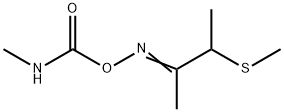
What is BUTOCARBOXIM?
The Uses of BUTOCARBOXIM
Butocarboxim is a systematic selectively acting insecticide with anticholinesterasic activity. Butocarboxim is used to control sucking pests such as mites, aphids, white flies as well as bees in agric ulture.
The Uses of BUTOCARBOXIM
Labelled Butocarboxim, a systematic selectively acting insecticide with anticholinesterasic activity. Butocarboxim is used to control sucking pests such as mites, aphids, white flies as well as bees i n agriculture.
Metabolic pathway
Butocarboxin is a structural isomer of aldicarb. Butoxycarboxim is the sulfur oxidation (sulfone) product of butocarboxim. Limited information is available to describe the degradation and metabolic fate of these two compounds. As with aldicarb, oxidation of the sulfur molecule of butocarboxim to butocarboxim sulfoxide and butoxycarboxim is the primary photolytic and metabolic reaction in soils, plants and animals (Scheme 1).
Degradation
Butocarboxim (1) is stable to hydrolytic degradation (pH 5-7, up to 50 °C,
PM) and is stable under UV light irradiation. It degrades under strong
acidic and alkaline conditions.
Butoxycarboxim (2) is susceptible to alkaline hydrolysis (DT50 values of
500, 18 and 16 days in pH 5, 7 and 9, respectively, PM). It is also stable
under UV light irradiation.
Properties of BUTOCARBOXIM
| Melting point: | 25 °C |
| Density | 1.2118 (rough estimate) |
| vapor pressure | 1.1×10-2pa(20°C) |
| refractive index | 1.5690 (estimate) |
| form | neat |
| Water Solubility | 35 g l-1 (20 °C) |
| pka | 13.83±0.46(Predicted) |
| EPA Substance Registry System | 2-Butanone, 3-(methylthio)-, O-[(methylamino)carbonyl]oxime (34681-10-2) |
Safety information for BUTOCARBOXIM
| Signal word | Danger |
| Pictogram(s) |
 Flame Flammables GHS02  Skull and Crossbones Acute Toxicity GHS06  Environment GHS09 |
| GHS Hazard Statements |
H226:Flammable liquids H319:Serious eye damage/eye irritation H410:Hazardous to the aquatic environment, long-term hazard |
| Precautionary Statement Codes |
P210:Keep away from heat/sparks/open flames/hot surfaces. — No smoking. P273:Avoid release to the environment. P280:Wear protective gloves/protective clothing/eye protection/face protection. P301+P310:IF SWALLOWED: Immediately call a POISON CENTER or doctor/physician. P303+P361+P353:IF ON SKIN (or hair): Remove/Take off Immediately all contaminated clothing. Rinse SKIN with water/shower. |
Computed Descriptors for BUTOCARBOXIM
New Products
Tert-butyl bis(2-chloroethyl)carbamate 4-Methylphenylacetic acid N-Boc-D-alaninol N-BOC-D/L-ALANINOL 3-Morpholino-1-(4-nitrophenyl)-5,6-dihydropyridin- 2(1H)-one Furan-2,5-Dicarboxylic Acid Tropic acid 1,1’-CARBONYLDIIMIDAZOLE DIETHYL AMINOMALONATE HYDROCHLORIDE R-2-BENZYLOXY PROPIONIC ACID 1,1’-CARBONYLDI (1,2-4 TRIAZOLE) N-METHYL INDAZOLE-3-CARBOXYLIC ACID (2-Hydroxyphenyl)acetonitrile 4-Bromopyrazole 5-BROMO-2CYANO PYRIDINE 5,6-Dimethoxyindanone 5-broMo-2-chloro-N-cyclopentylpyriMidin-4-aMine 2-(Cyanocyclohexyl)acetic acid 4-methoxy-3,5-dinitropyridine 2-aminopropyl benzoate hydrochloride 1-(4-(aminomethyl)benzyl)urea hydrochloride diethyl 2-(2-((tertbutoxycarbonyl)amino) ethyl)malonate tert-butyl 4- (ureidomethyl)benzylcarbamate Ethyl-2-chloro((4-methoxyphenyl)hydrazono)acetateRelated products of tetrahydrofuran

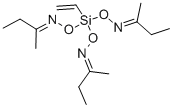
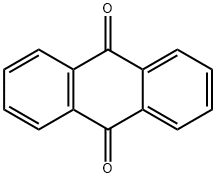
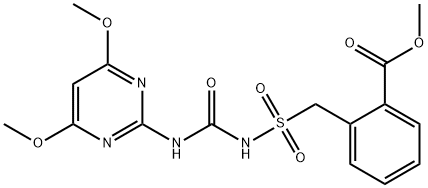

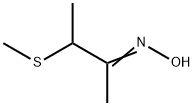


You may like
-
 Butocarboxim CAS 34681-10-2View Details
Butocarboxim CAS 34681-10-2View Details
34681-10-2 -
 1975-50-4 98%View Details
1975-50-4 98%View Details
1975-50-4 -
 2-HYDROXY BENZYL ALCOHOL 98%View Details
2-HYDROXY BENZYL ALCOHOL 98%View Details
90-01-7 -
 2-Chloro-1,3-Bis(Dimethylamino)Trimethinium Hexafluorophosphate 221615-75-4 98%View Details
2-Chloro-1,3-Bis(Dimethylamino)Trimethinium Hexafluorophosphate 221615-75-4 98%View Details
221615-75-4 -
 61397-56-6 CIS BROMO BENZOATE 98%View Details
61397-56-6 CIS BROMO BENZOATE 98%View Details
61397-56-6 -
 14714-50-2 (2-Hydroxyphenyl)acetonitrile 98+View Details
14714-50-2 (2-Hydroxyphenyl)acetonitrile 98+View Details
14714-50-2 -
 118753-70-1 98+View Details
118753-70-1 98+View Details
118753-70-1 -
 733039-20-8 5-broMo-2-chloro-N-cyclopentylpyriMidin-4-aMine 98+View Details
733039-20-8 5-broMo-2-chloro-N-cyclopentylpyriMidin-4-aMine 98+View Details
733039-20-8